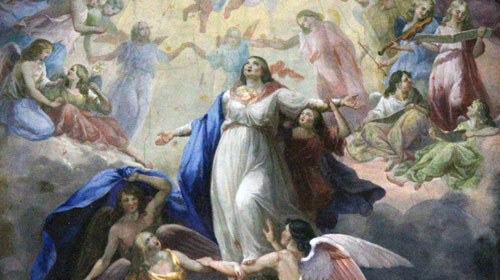Chiesa di San Giovanni Battista
Diocesi di Alba ( sec. XIV; XVI )
La chiesa di San Giovanni rappresenta una delle emergenze religiose più antiche di Alba. All'interno opere di Barnaba da Modena, Macrino d’Alba e Gandolfino da Roreto.
Diocesan Museum of Tortona
Diocesi di Tortona
The Palazzo del Seminario in Tortona houses the Diocesan Cultural Centre, comprising the Historical Archive, the Seminary Library and the Diocesan Museum (currently still under restoration).
Santuario Santa Maria di Crea
Diocesi di Casale Monferrato ( sec. XII; XVIII )
Secondo la tradizione il Santuario di Crea sarebbe riconducibile all’apostolato mariano di Eusebio, vescovo di Vercelli. Importantissime le opere rinascimentali di Francesco Spanzotti (1474-79).e di Macrino d'Alba.
Macrino d’Alba

Macrino (a nickname that seems to describe his slim physique), born in Alba in about 1470, was unusual for a Piedmontese artist. He owes his early critical notoriety to the fact that an important painting he produced is still to be found in the Capitoline Museums, where he was promptly interpreted as a follower of the Tuscan and Umbrian Renaissance. In point of fact, Macrino had a modern Tuscan-Roman background, owed to Pinturicchio but also with local and Lombard influences. In this sense, the debate regarding his journey or journeys to Rome is not especially pertinent. His works were usually signed and dated, making it easy to attribute to a painter otherwise little known in documents and sources the Virgin with Child, Saints James, John the Evangelist, John the Baptist, and Thomas Aquinas, and Two Donors (Turin, Municipal Museum of Antique Art); the Virgin and Child with Saint Bernard of Clairvaux and the Donor (Annibale Palaeologus), and Saint John the Baptist (Tortona, Bishop’s Palace); Virgin and Child with Saints Francis and Thomas Aquinas, Angels and Two Female Donors (Alba, Town Hall); Virgin and Child with Saints James, John the Baptist, Augustine and Jerome (Treasury of the sanctuary of Crea).






